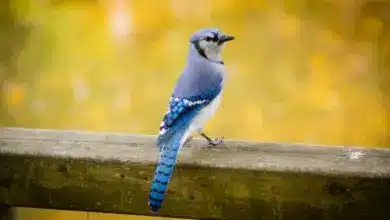Mugimaki Flycatchers
The Mugimaki Flycatchers (Ficedula mugimaki) – also known as the Robin Flycatchers – are Old World flycatchers that occur naturally in eastern Asia. Their common name “mugimaki” comes from Japanese and means “wheat-sower”.
Distribution / Range
These migratory birds breed in eastern Siberia and northeast China. During the migration, they pass through eastern China, Korea, and Japan in spring and autumn.
They winter in Southeast Asia, reaching western Indonesia and the Philippines. One single vagrant was recorded in Alaska, the Shemya Island, in 1985.
They inhabit forests and woodland, mostly at higher elevations. During the migration, they also visit parks and gardens.
Description
They measure about 13 to 13.5 centimeters in length, from the top of the head to the tip of the tail.
The adult male has a blackish upper plumage, with a short white supercilium (line above the eyes). He has white wing patches, white edges to the tertials (= the flight feathers that are closest to the bird’s body along the wing), and white at the base of the outer tail feathers. The chest and throat are orange-red. His abdomen and undertail coverts (feathers) are white.
Juvenile males resemble adult females, except they have a brighter orange chest, white in the tail, and a more obvious supercilium.
The female is greyish-brown above. Her throat and chest is a pale orange-brown. She lacks the white coloring in the tail. She has one or two pale wingbars rather than a white wing patch. The supercilium is either faint or absent entirely.
Calls / Sounds: Their calls are described as rattling. They often flick their wings and tails.
Diet / Feeding
Mugimaki Flycatchers typically feed on flying insects high in the tree canopy. They forage alone or in small feeding flocks.





